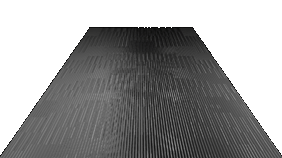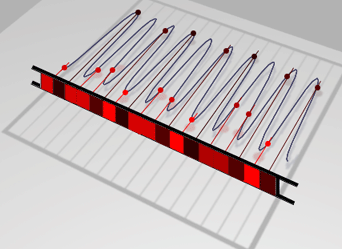Introduction
Images produced by a shader that create repeating patterns tend to show a defect known as spatial aliasing. The defect is especially noticable with regular patterns. For example, suppose a displacement shader uses the sin() function to create regular waves on a simple polygon. As the image on the right shows, at low frequency ie. few crests and valleys, the shader works as expected.

Figure 1 - Low Frequency Pattern
However, as shown in figure 2, once the frequency of the sine waves reaches
a certain magnitude an objectionable aliasing occurs.

Figure 2 - High Frequency Pattern and Spatial Aliasing
What makes the problem even worse is that the defects flicker during an animation. In other words the high frequency pattern is not only causing spatial aliasing it is also causing temporal aliasing as well.





